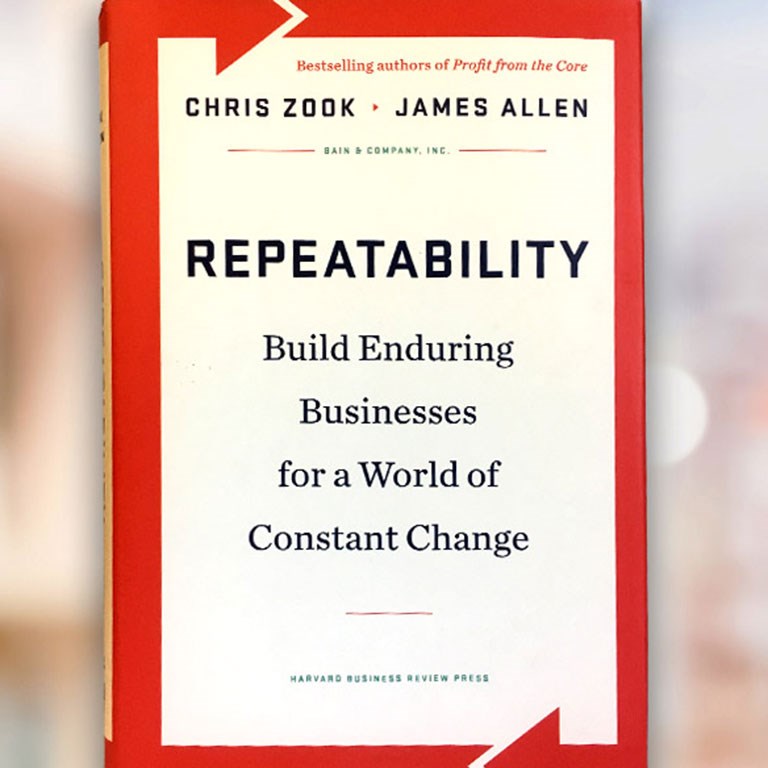Founder's Mentality Blog
When large, successful companies lose their way and begin to decline, they do so almost imperceptibly. Complexity and the weight of bureaucracy blur their vision. Their Founder’s MentalitySM fades: They lose sight of their core value proposition, and their customer connections begin to fray. Too often, they become distracted by expansion, hoping to find new growth outside of a business that has matured and slowed. The decline may start off slowly and quietly, but left unchecked, it soon accelerates into a full-blown crisis.
In our experience, this spiral downward doesn’t have to mean “game over.” But as we’ve demonstrated in our book Repeatability, it does require that the company find a way to regain the focus, flexibility and intensity that were so central to its early success. In short, it must revive its Founder’s Mentality and return to the core. Earlier this week, we saw a reminder of just how powerful that can be when news broke that Denmark’s LEGO Group had vaulted past Hasbro to become the world’s second-largest toy company behind Mattel.
Less than a decade ago, LEGO was in a desperate fight for survival. Run for years by Kirk Kristiansen, the grandson of the original founder, the toy company had grown from sales of $100 million in 1978 to $1.3 billion in 1993. But soon after Kristiansen relinquished the CEO post due to health reasons, subsequent waves of management lost confidence in the future revenue potential of company’s iconic plastic bricks. They expanded into a range of new businesses, from theme parks and TV programming to clothing and publications. The result was disastrous: A slide in its profit margin, from 15% in 1993 to a negative 28% in 2004. Over 10 years, LEGO lost value at an average rate of 300,000 Euros a day.
Enter Jorgen Vig Knudstorp, who took over as CEO in 2004. Although he wasn’t the founder or a member of the founder’s family, he quickly embraced the company’s founding principal: LEGO was in business to make innovative building toys that children could learn from. The conventional wisdom was that LEGO’s brick business was too small and burdened with high costs to compete in the increasingly cut-throat global toy marketplace. But after gaining exposure to LEGOs rabid group of core customers—both children and adults—Knudstorp recognized the passion for the brand. So he convinced the board to cast off a set of distracting adjacent businesses so LEGO could embark on a five-phase, seven-year effort to return to its core.
Reviving a business in the throes of crisis was a bold choice. To succeed, LEGO had to radically reduce complexity and completely revamp its supply chain—all while ramping up innovation to more clearly differentiate its offerings. To rekindle the bonds between customer and company, LEGO promoted learning systems, such as online communities and customer conventions. It began to collect Net Promoter Scores at each customer touch point. That, in turn, provided the basis for appealing flagship stores and forging strong relationships with leading retailers.
The learning and a new sense of urgency helped LEGO improve product development time by 50%, and the company quickly realized that innovation around the core block products and themes offered significant potential for renewal. It created a virtual LEGO world and strengthened partnering with companies like Walt Disney to make licensed LEGO characters and video games. Its latest innovation—the Legends of Chima group of themed building blocks—is fueling recent growth. So is a successful expansion into Asia, which is offsetting slower growth in mature markets like Europe, the US and Japan.
Knudstorp is a fervent believer in repeatability. As Danish journalist Niels Lunde writes in his (Danish) bestselling book Miraklet i LEGO (Miracle at LEGO), Knudstorp is fond of quoting a poem by T.S. Eliot that he believes captures its essence:
We shall not cease from exploration
And the end of all our exploring
Will be to arrive where we started
And know the place for the first time.
He’s convinced repeatability is not so different from the challenge posed by LEGO bricks: Just as kids embrace their old LEGOs in new ways each time they return to the building table, companies must embrace their core value proposition by repeating it, learning from it and constantly challenging it. “We should not fear repetition,” Knudstorp wrote in an old blog post unearthed by Lunde. “Not mindless, endless repetition, but repetition as in great variations over a wonderful theme and idea. The whole initial success of this company is built on repetition.”

Repeatability
Learn more about how executives use Repeatable Models® to build enduring businesses.